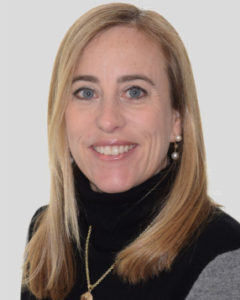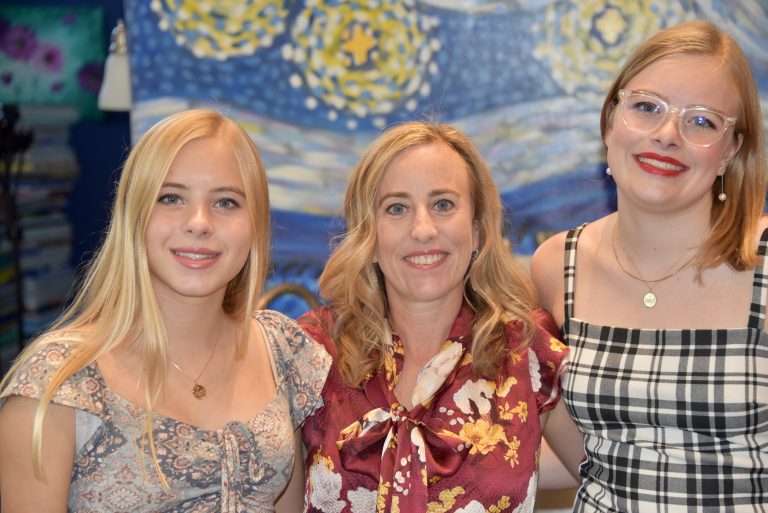
Virginia Blum is a Special Education Advocate, wife, and mother of two daughters. Prior to becoming an advocate, she volunteered extensively at both of her daughter’s schools and as the Volunteer Coordinator at Abilis, a Greenwich based nonprofit organization that provides services and supports for individuals with special needs and their families. She currently runs the Abilis Youth Board and works part-time at CT Education Advocacy as a Special Education Advocate.
My long-term journey to special education advocacy was not a planned one. As I write this, I am currently gainfully employed as a part-time Special Education Advocate. It all makes sense now, but there’s no way I could have foreseen the long and winding road my daughter would lead me down to get to this point.
I graduated from University of Virginia in 1995 with a Bachelor of Science in Accounting and worked professionally as an auditor for Ernst & Young and a financial analyst for a couple of large law firms. I was good at math, I loved to organize, and my career path was easy. And then life happened -my first daughter, Brinkley, was born in June 2002, and less than two years later, in March of 2004, my second daughter, Mary Kate, arrived.
By the time I was pregnant with Mary Kate, it was clear that Brinkley wasn’t developing typically. She was almost 2, flapped her hands when excited or nervous, did not make eye contact or respond to her name consistently, and while she was proficient in language, she often responded to me by repeating what I had just said. I later learned this was called Echolalia, the unsolicited repetition of vocalizations made by another person. For example, if I asked Brinkley, “What do you want for dinner?” Her response would be, “What do you want for dinner? A hamburger.” We had Brinkley evaluated by a number of professionals, and we learned that Brinkley is an individual with Autism Spectrum Disorder (ASD).
I worked desperately to understand the diagnosis. I did everything the experts told me to do. I read every book I could find. I was determined to provide my child with the most appropriate programs and supports, and I actually believed that if I provided her enough therapy, I could “cure” her disability. It became an exhausting full-time job. We tried what seemed like every 3-letter acronym therapy in the book– ABA, CBT, RDI, DBT—as well as other services and providers from speech to OT to BCBA to PhDs. Everything helped, but there is no magic wand you can wave to enable your ASD child to understand the social world.
Eventually, of course, it was time for school, and I got my first taste of the special education system. I prepared extensively for every PPT meeting, using the advice of my outside team of experts to help drive the process with the school team. But we became so frustrated with the school team’s continuous refusal to give our daughter what she needed that we pulled her out and placed her in a small private school. We provided her with a full time aide for the first few years and did a ton of therapy after school.
As she grew older, the social demands increased and became more complex, and the manifestations of her diagnosis became more pronounced. As a teenager, it was extremely hard for her to understand the social cues and nuances neurotypical people take for granted. It was both frustrating and heartbreaking to watch her try and fail, again and again. I wanted to fix the problem and make life easier for her, but while you can make a lot of progress, ASD isn’t something you can just make go away. Our daughter attended four different private and public schools between fifth and eighth grade, and each one worked out well… until it didn’t.

High school brought more options in terms of specialized educational opportunities. We decided to send Brinkley to a unique boarding school for high functioning teens with ASD. If Brinkley was ever going to become independent, something we and she desperately wants, she needed to learn to do it without our support, and boarding school seemed like the most appropriate answer. This change was good for Brinkley, and for our family, but it left me suddenly without a purpose. I had spent 15 years focused on learning about ASD, helping her, driving to countless appointments, running home therapy programs, and meeting with her school team. I felt rudderless with her at school and I now had a lot of time on my hands.
I wanted to do something to help parents facing the same issues I’d faced. I realized I wanted to work, but I knew I did not want to go back to accounting. My skills were still there, dormant, but it was no longer the right fit. It didn’t take long for me to realize that I could apply all the knowledge I had accumulated after a dozen years advocating for Brinkley to help other families. Since my undergraduate degree was in accounting, I would have had to go back to school for a long time to become a therapist. Further, therapists interact mainly with children, and I wanted to help students of all ages. So, I needed to find another path.
I ultimately decided to take the Special Education Advocate Training (SEAT) 2.0 course. Sponsored by the Council of Parents, Advocates, and Attorneys, COPAA’s SEAT 2.0 is the only nationally developed and recognized year-long special education advocacy training course. It provides participants with training to become advocates via a live virtual classroom, complemented by self-paced web learning, readings, and group and individual assignments.
Getting into this class wasn’t easy for me, even though I had been advocating for my daughter for the last 15 years. I filled out the application online the day the link went live, and I knew I must have been one of the first people who had applied. But based on the information the application called for, I also knew that I didn’t have any other relevant prior experience or training besides helping my own daughter.
While my application was pending, I received a call from one of the SEAT Teaching Assistants. She had reviewed my application and bluntly suggested that I consider applying the following year, after I completed some outside trainings. She was clearly worried that the course would be too difficult and that I would not be able to complete it. I asked her the following questions: What other trainings did she recommend? (she couldn’t come up with any). What other qualifications were actually required? (there weren’t any). Finally, I told her that she should go ahead and let me enroll and pay for the class. If I failed out, it was no loss to her, since she could keep the course fee. She agreed to enroll me in the class. I was already proving myself to be a good advocate!
For the 2017-18 school year, while my children were completing 9th and 7th grade, I was neck-deep in my SEAT studies. I learned about every child’s right to a free and appropriate education, the details of federal special education law, the Americans with Disabilities Act, important special education case law, and the nuances of the laws in Connecticut. It was exciting and invigorating, as well as eye-opening.
The final requirement for SEAT 2.0 is a real-world practicum. All participants must accumulate at least 40 hours of experience working with an established special education advocate. Thankfully, I already knew one! In the spring of 2018, I called Jill Chuckas at CT Education Advocacy. I had actually hired Jill to review my own daughter’s IEP a couple years prior, and having worked with her on that, I knew she was the only person I wanted to train under.
As luck would have it, Jill had founded her own advocacy practice and was looking for some help with bookkeeping. Given my accounting background, I was able to help Jill with her billing, and she was able to share her vast advocacy experience with me. After completing my practicum in January 2019, I joined Jill and CTEA as an independent contractor and special education advocate. Jill found the need for special education advocates so great that she couldn’t help all the families who reached out to her, so I immediately began working with families who needed help navigating the special education process in their school districts.
Every family’s circumstances are unique and together we develop a plan that helps the child grow and be successful. Professionally, this has been a wonderful experience for me. It is gratifying to have found a way to capitalize on everything I learned managing Brinkley’s educational issues, and I turbocharged that knowledge via the SEAT training. I have purposely limited the number of clients I take on so I can continue to manage my own family’s issues, including helping Brinkley on her ongoing journey. In the past ten months, I am proud to have successfully outplaced a few students, requested and received Independent Education Evaluation (IEE), negotiated better programs for students, and supported my clients through some very tricky situations. I work with a variety of families and support children with all different disabilities and issues. I know I have helped these families and children obtain better programs and free and appropriate educations – all in my first year as a professional advocate.
There is no playbook for parenting a child with a disability. I’m glad I’m where I am now, but this certainly wasn’t an easy road. There have been many bumps, twists and turns along the way. You do the best you can with the knowledge, facts and circumstances you have in each moment. I learned most of what I know the hard way, but I honestly believe it makes me a better person and a terrific special education advocate. I can empathetically look my clients in the eye and say, “I understand. I’ve been where you are. I’ve felt the same frustration and pain. And I can help!”